Needleless
Acupuncture


Tobacco Addiction
Let’s take a moment to get real!
…anyone who doesn’t realize by now that smoking causes health problems has a seriously reduced level of brain function, so admonitions based on health issues are in many cases of no value. The idea that smoking will make us wrinkled and ugly is for some perhaps a bit more functional, depending on our level of vanity. The idea that smoking will cause us to be criticized or rejected only makes us sneaky. So while these facts are sometimes useful, many smoking behaviors seem out of reach of logic.
The intention of this article is to provide a one stop resource with some of the most valuable available materials (which can be bookmarked for easy access), and are here for use by those who find this type of material helpful. (I placed the best last, so don’t miss the final section)… Thankfully, there is a worldwide effort to discourage smoking, shrinking the number of places one can smoke, prohibiting seductive advertising, and requiring packages to state simply: SMOKING KILLS. Canada even requires graphic disease photos on cigarette packs (an example is found elsewhere in this material).
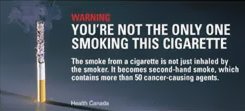

It’s fascinating to see the popularity of a product which, if used according to the manufacturers instructions, kills half of it’s users. It is difficult to watch friends cigarette by cigarette creating chronic diseased states which, eventually can excluded them from even the simplest pleasures of going for a walk or swimming, all because they refuse to enjoy the subtleties of breathing unless it is done through a chemically laced tobacco stick, all the while, cheerfully stuffing money into the pockets of some of the most noxious corporate entities on our planet.
I have shamelessly and gleefully stolen, modified, and manipulated content, with no hint of recognition of sources, except for my friends Sarito and Linda, recognizing that being sued for plagiarism would simply attract more attention to the problem. As a former heavy smoker, I am not someone who shuns smokers, or has a strong reaction to someone smoking near me, unless in a closed space. I would simply like to provide some helpful tools, which I was not aware of when I was a smoker.
My own smoking ‘career’ began with imitating icons like James Dean, and the Marlboro man (before he died of lung cancer)…..I smoked heavily for several years. Marlboros>Tareytons> Drum>Alas,etc. I then discovered yoga and pranayama and quit for several years…. Then while working in a western medical clinic, which was offering stop smoking treatments myself and my associate began to be tempted by the baskets of tobacco products left by those who were receiving “ treatments”. First smoking once in a while, then daily, then continuously. Being hypocritical did little for my self image. When I finally stopped in 1985, I thought it would be very difficult to be deprived of the ‘joy’ of smoking, but, later wondered how I ever tolerated it. I had tried many ploys such as only smoking outside (in winter), only buying two cigarettes, only smoking while standing, etc. All of which accomplished several things : allowing me to continue to smoke; keeping me bound to my ‘war’ with smoking; allowing me to avoid the real issue of learning to breathe; and giving me the opportunity to sink more heavily into feelings of failure. I was of course aware of the issues: stinking breath, lung diseases, skin wrinkles, decreased endurance, being offensive to non-smokers, loss of respect of others who could not understand why anyone would smoke, given what we know about its effects, and of couse cost. In those days the cost was minimal. Today the cost at Guatemalan prices for Marlboro’s is $8000 for 10 years and US price $20,000, + of course medical and dental costs.
Still, the habit imbeds deeply and has associations that trigger the urge. One of my personal favorite triggers was stress, but I was never able to determine exactly how punishing my lungs was going to solve a stressful situation, never mind. Another was desk jobs, where I was immersed in telephone and paperwork. Luckily I was able to stop working at desk jobs or who knows, I might still be smoking.
There are many kinds of ‘triggers’ for smoking: ritual smokers who smoke after eating, after sex, when having a coffee, talking on the telephone, doing paperwork etc., oral smokers who want to put something to their lips; those who need something to do with their hands; nicotine addicted (less common than might be imagined), those who have a mental association with relaxation (taking a ‘break’), or smoking because of boredom.
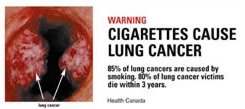
One of the most interesting ‘triggers’ can be observed at parties. People who almost never smoke otherwise, but are feeling uncomfortable and stressed by the social setting, feel more secure taking a deep tension relieving breath if it’s done through a cigarette.
There are a myriad of solutions available, some of which will be listed here, but if one struggles with smoking, it keeps smoking center stage on one’s mental “screen”. Some of the most effective methods consist of replacing “quitting smoking” with “learning to breathe”, or exercise, or some other enjoyable activity, replacing thoughts about smoking, with attention to what you are using to replace it.
Would you, if speaking to a young person that you particularly like, advise them to start smoking to improve their life? Many people purport to be aware of the risks of smoking but clearly are not inhabiting the day to day reality of one who can barely walk 50 yards because of shortness of breath and continues to live 20 more years. Once one sees someone who spends years virtually bedridden, it leaves an indelible imprint.
One of the ‘gains’ is the tremendous boost that comes from no longer being the helpless stooge of corporate parasites, whose only desire is to enrich themselves by the vehicle of your ignorance of the chemicals cocktails they use to addict you, in reality creating a drug addict…..YOU.
Focusing on fear of damage to your health often does nothing more than make one more nervous, or anxious increasing the desire to smoke. Also it can seem like a real sacrifice to leave this familiar “companion” who is always there for you. Perhaps a funeral ceremony is called for to let go of this “friend” once and for all.
For those who need to be challenged by difficult tasks, (number 6 enneagram?), try these: Figures show only 5 of 100 smokers actually quit permanently so perhaps it’s really hopeless to try. The reality is that damage occurs so gradually, that by time the damage has accumulated it is virtually irreversible so one may as well continue. And of course, “I know lots of people who have smoked for years and have had no problems.”
There is of course the possibility that you will be like “uncle Joe” who smoked all his life and was never sick. However, if someone offered you an investment whose odds of of returning a profit were the same as your odds of not suffering health problems from long term smoking would you put all of your money into it???
In reality, within 12 hours after you have your last cigarette, your body will begin to heal itself. The levels of carbon monoxide and nicotine in your system will decline rapidly, and body begins to repair itself, but instead of feeling better right away, you may feel worse for a while. It's important to understand that healing is a process; it begins immediately, but it continues over time. These "withdrawal pangs" are really symptoms of the recovery process.
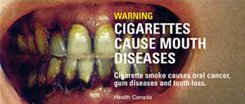
Immediately after quitting, many ex-smokers experience "symptoms of recovery" such as temporary weight gain caused by fluid retention, irregularity, (since nicotine act as a laxative), and dry, sore gums or tongue. You may feel edgy, hungry, more tired, and more short-tempered than usual and have trouble sleeping and notice that you are coughing a lot. These symptoms are the result of your body clearing itself of nicotine, a powerful addictive chemical. Most nicotine is gone from the body in 2-3 days.
One classic defense tactic used by smokers is to take on a hostile attitude toward those who criticize our smoking, “showing” them that they can’t take away our freedom (to be enslaved).
- Do you identify more with smokers or non-smokers???
- Counting the days, weeks, or months since you quit, is a way of continuing mentally to be a smoker.
- Ask yourself when??? tomorrow?? next week??, next year??……or now?
- What kind of satisfaction does smoking give you – physical…., mental,…. or emotional? Ask what would I do instead if I didn’t smoke this cigarette?
- Take a deep breath AND HOLD IT just as you would a cigarette.
- Put all of your cigarette butts in a jar for 10 days, and then take the lid off and smell it.
- Try sucking a whole clove…cloves are a mild stimulant and take away the stale taste in your mouth.
- When by yourself, and the urge to smoke comes, try jumping lightly up and down while breathing rapidly thru your nose for 60 seconds. (preferably not in your favorite restaurant on a busy Friday nite)
- A famous technique is to take 4 breaths in thru the nose and exhale 4 thru the mouth for 2 minutes.
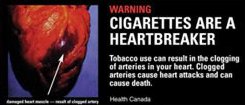
Take a course of instruction in Pranayama or Qigong.
Visit a place where smoking is not allowed, for two or three days.
Visit someone who has emphysema and notice their oxygen tank, which will perhaps allow them to ‘live’ a long time.
Take a simple emphysema test: hold a lighted match at arms length and with your mouth open as if you were going to bite an apple, try to blow out the match.
Visit http://www.lungtester.com/ for a free online lung test. which only takes 2 minutes
Sit with a small child on your lap and speak to them with your mouth near their face and ask them how your breath smells (an optional but effective form of child abuse).
There are many aids to help one to quit smoking: stop smoking drugs, hypnotism, acupuncture, DVD’s, EFT, books, electronic cigarette substitutes, herbal mixtures, etc.
What Are The Benefits of Quitting Smoking?
It is possible to talk yourself out of quitting by believing that your tobacco use is not a serious addiction. Here's a quick quiz to help gauge the seriousness of your tobacco use. If you answer "yes" to three or more of the following questions, your smoking may be more than just a compulsion.
- Do I smoke everyday?
- Has a doctor or dentist ever suggested that I stop smoking?
- Do I find it difficult to imagine life without smoking?
- Do I smoke to escape from boredom and worries while under stress or pressure?
- Have I felt physical or emotional discomfort when trying to quit?
- Do I buy extra tobacco supplies to assure that I will not run out?
- Do I prefer activities and places that allow me to smoke?
- Do I inwardly feel ashamed of myself because of my smoking?
- Has my smoking caused a problem at home or in a relationship?
- Do I ever find myself lighting another cigarette without consciously deciding to have another?
- Do I feel that my life would be better if I did not use tobacco?
- Do I continue to smoke even though I am aware of the health hazards associated with smoking?
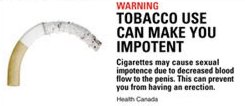
ALWAYS REMEMBER IT IS INCREDIBLY EASY TO STOP, AND UNTIL YOU TAKE THE NEXT CIGARETTE, YOU ARE A NON-SMOKER
What Are The Benefits of Quitting Smoking? Ever wonder what happens to your body the moment you stop smoking? Within 20 minutes of smoking that last cigarette, the body begins a series of changes that continues for years.
20 MINUTES
- Blood pressure drops to normal.
- Pulse rate drops to normal.
- Body temperature of hands and feet increases to normal.
8 HOURS
- Carbon monoxide level in blood drops to normal.
- Oxygen level in blood increases to normal.
24 HOURS
- Chance of heart attack decreases.
48 HOURS
- Nerve endings start regrowing.
- Ability to smell and taste is enhanced.
- Circulation improves.
- Walking becomes easier.
- Lung function increases up to 30%.
1 TO 9 MONTHS
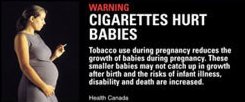 Coughing, sinus congestion, fatigue, and shortness of breath decrease.
Coughing, sinus congestion, fatigue, and shortness of breath decrease.- Cilia regrow in lungs, increasing ability to handle mucus, clean the lungs, and reduce infection. Body's overall energy increases.
1 YEAR
- Excess risk of coronary heart disease is half that of a smoker.
5 YEARS
- Lung cancer death rate for average smoker (one pack a day) decreases by almost half.
- Stroke risk is reduced to that of a nonsmoker 5-15 years after quitting.
- Risk of cancer of the mouth, throat and esophagus is half that of a smoker's.
10 YEARS
- Lung cancer death rate similar to that of nonsmokers.
- Precancerous cells are replaced.
- Risk of cancer of the mouth, throat, esophagus, bladder, kidney and pancreas decreases.
15 YEARS
- Risk of coronary heart disease is that of a nonsmoker.
What Are Some Rewards of Quit Smoking!
Immediate Rewards
Within a few days you will probably begin to notice some remarkable changes in your body. Your sense of smell and taste may improve. You will breathe easier, and your smoker's hack will begin to disappear, although you may notice that you will continue to cough for a while. And you will be free from the mess, smell, inconvenience, expense, and dependence of cigarette smoking.
Long-range Benefits
It is important to understand that the long range after-effects of quitting are only temporary and signal the beginning of a healthier life. Now that you've quit, you've added a number of healthy productive days to each year of your life. Most important, you've greatly improved your chances for a longer life. You have significantly reduced your risk of death from heart disease, stroke, chronic bronchitis, emphysema, and several kinds of cancer – not just lung cancer. (Cigarette smoking is responsible every year for approximately 130,000 deaths from cancer, 170,000 deaths from heart disease, and 50,000 deaths from lung disease.)
Other Health Benefits of Quitting Smoking...
Unless otherwise indicated, information in this section comes from Quit Victoria, 1995
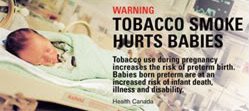
The 1990 Report of the US Surgeon General is devoted to smoking cessation, and has reached the following major conclusions:
- Smoking cessation has major and immediate health benefits for men and women of all ages. Benefits apply to persons with and without smoking-related disease.
- Former smokers live longer than continuing smokers, and the benefits of quitting extend to those who quit at older ages. For example, persons who quit smoking before age 50 have one-half the risk of dying in the next 15 years compared with continuing smokers.
- Smoking cessation decreases the risk of lung cancer, other cancers, heart attack, stroke, and chronic lung disease. Women who stop smoking before pregnancy or during the first 3 to 4 months of pregnancy reduce their risk of having a low birthweight baby to that of women who never smoked.
- The health benefits of smoking cessation far exceed any risks from the average 2.3 kg (5 pound) weight gain or any adverse psychological effects that may follow quitting.
British research has confirmed that quitting at any age increases life expectancy, provided that quitting takes place prior to the development of cancer or other serious disease. Those who quit before the age of 35 have a life expectancy that is not significantly different from non-smokers. For those who stop later, the risk is intermediate between non-smokers and continuing smokers. Even those who stop between 65-74 years of age experience age-specific mortality rates beyond age 75 years appreciably lower than those who continue to smoke.
Immediate benefits:
- Cancers
- Ten years after stopping smoking, the ex-smoker's risk of developing lung cancer has declined to between 30-50% of the risk in continuing smokers, and risk continues to decline with abstinence. Quitting also lowers the risk of laryngeal cancer, and reduces the extent and severity of premalignant cellular changes in the lining of the larynx and the lungs.
- Stopping smoking halves the risk of mouth and oesophageal cancers after five years of quitting. The risk of pancreatic cancer is also reduced, although this may only be measurable after ten years of abstinence. The risk of bladder cancer reduces after a number of years, but studies have conflicting findings about extent. The risk of cervical cancer is substantially lower among former smokers than current smokers, even in the first few years following cessation.
- Cardiovascular disease
- Smoking cessation greatly reduces the risk of coronary heart disease (CHD). Risk of mortality is reduced by about half one year after cessation, then declines gradually. After around 15 years of abstinence, the risk of CHD is similar to that of never-smokers. For those smokers with diagnosed CHD, stopping smoking appears to reduce the risk of recurrent infarction and cardiovascular death by 50% or more. Smoking cessation substantially reduces the risk of developing peripheral vascular disease, and improves management of the existing condition. Smoking cessation also reduces the risk of ischaemic stroke and subarachnoid haemorrhage.
- Respiratory disease
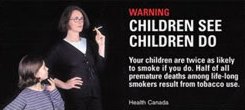 Stopping smoking reduces rates of respiratory symptoms such as cough, sputum production and wheezing, and respiratory infections such as bronchitis and pneumonia. In smokers with established chronic obstructive pulmonary disease (COPD), stopping smoking improves pulmonary function by about 5% within a few months of cessation. The accelerated decline in lung function in smokers stops with smoking cessation, returning to the far slower rates of decline that naturally occur with ageing. With sustained abstinence, mortality rates from COPD among former smokers decline in comparison to continuing smokers.
Stopping smoking reduces rates of respiratory symptoms such as cough, sputum production and wheezing, and respiratory infections such as bronchitis and pneumonia. In smokers with established chronic obstructive pulmonary disease (COPD), stopping smoking improves pulmonary function by about 5% within a few months of cessation. The accelerated decline in lung function in smokers stops with smoking cessation, returning to the far slower rates of decline that naturally occur with ageing. With sustained abstinence, mortality rates from COPD among former smokers decline in comparison to continuing smokers.- Reproduction
- The US Surgeon General has stated that 'smoking is probably the most important modifiable cause of poor pregnancy outcome among women in the United States'.
- Women who stop smoking before becoming pregnant, or who quit smoking in the first three to four months of pregnancy, have infants with the same birthweight as those born to women who have never smoked. Those women who stop smoking any time up to the 30th week of pregnancy have babies with higher birthweight than those who smoke throughout pregnancy. Reducing the number of cigarettes smoked, rather than quitting completely, does not appear to benefit birthweight of the foetus.
- Smoking causes women to reach menopause one to two years early, but former smokers have an age at natural menopause similar to those who have never smoked.
- Other disease processes
- Smokers have an increased risk of developing duodenal and gastric ulcers. The increased risk is reduced by stopping smoking. Ulcer disease is more severe, less likely to heal, and more likely to recur in smokers. Affected smokers who quit do better than continuing smokers.
Cessation and the older smoker:
As noted above, cessation at any age carries benefits for the smoker, reducing the risk of major disease. Smoking in later life has also been associated with higher rates of physical disability, poorer self-perceived health status, higher levels of depressive symptoms, and lower levels of physical function, bone mineral density, pulmonary function, and muscle strength. Cessation therefore is an important factor in bringing about improvement in general health and well-being.
List of 500+ Ingredients and Additives in a cigarette?
Submitted by Tuesday, 17 June 2008
The list of additives approved by the US Government for use in the manufacture of cigarettes is something every smoker should see. Submitted by the five major American cigarette companies to the Dept. of Health and Human Services in April of 1994, this list of ingredients had long been kept a secret.
Tobacco companies reporting this information were:
- American Tobacco Company
- Brown and Williamson
- Liggett Group, Inc.
- Philip Morris Inc.
- R. J. Reynolds
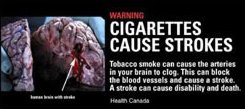
While these ingredients are approved as additives for foods, they were not tested by burning them, and it is the burning of many of these substances which changes their properties, often for the worse. Over 4000 chemical compounds are created by burning a cigarette, many of which are toxic and/or carcinogenic. Carbon monoxide, nitrogen oxides, hydrogen cyanide and ammonia are all present in cigarette smoke. Forty-three known carcinogens are in mainstream smoke, sidestream smoke, or both.
It’s chilling to think about not only how smokers poison themselves, but what others are exposed to by breathing in the secondhand smoke. The next time you’re missing your old buddy, the cigarette, take a good long look at this list and see them for what they are: a delivery system for toxic chemicals and carcinogens.
Cigarettes offer people only a multitude of smoking-related diseases and ultimately death.
The List
|
|
|
